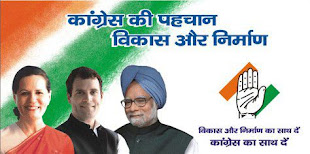Tarit Mukherjee
"More blood, more life" is this year's theme of the World Blood Donor Day, organized by the World Health Organization (WHO). Every two seconds someone needs blood. Our blood helps more than one life at a time. Accident victims, premature babies, patients undergoing major surgeries require whole blood, where blood after testing is used directly. Patients suffering from trauma, anemia, and other surgeries require only red blood cells, which is separated from our blood. The procedure of splitting blood components is called Cytapheresis. Similarly blood platelets are used for cancer patients undergoing chemotherapy or for those undergoing treatment for dengue fever etc. Fresh frozen plasma is used for patients having massive transfusions, plasma is used for burns and cryoprecipitate is used for hemophilia.
Blood is needed at regular intervals and at all times as it has only finite time of storage. Red blood cells can be stored for about 42 days, fresh frozen plasma and cryoprecipitate for 365 days and blood platelets for 5 days.
Blood is composed of 60% liquid and 40% solid part. The liquid part is called Plasma, made up of 90% water and 10% nutrients, hormones, etc. is easily replenished by food, medicines, etc. But the solid part that contains RBC (red blood cells), WBC (white blood cells) and Platelets take valuable time to be replaced if lost.
Blood is seen as a life force and a symbol of life itself. Human blood is in constant demand and blood donors are vital for a blood centre.Maintaining a safe blood supply is therefore a priority for public health. Blood donor decision-making was analyzed through a study to understand the process better and thereby increase donation efficiency and retention of donor pool. The decision to donate is motivated by a host of factors. It is well known that during blood donation, some subjects experience stress reactions which are higher in “first-time” donors than in experienced donors. AMT, a behavioural interventional technique was used to facilitate donation from individuals with blood phobia and reduce donor reactions. The aim of the exercise was to study the effect of AMT on donor reactions and donation experience, as well as donors’ attitude towards the AMT technique.
Blood is the life-maintaining fluid that circulates through the body's heart, arteries, veins and capillaries. Blood carries to the body nourishment, electrolytes, hormones, vitamins, antibodies, heat, and oxygen. Blood carries away from the body waste matter and carbon dioxide. Blood fights against infection and helps heal wounds, keeping one healthy. Blood makes up about 7% of our body's weight. White blood cells are the body's primary defence against infection. Granulocytes, a type of white blood cell, roll along blood vessel walls to search and destroy bacteria. Red blood cells carry oxygen to the body's organs and tissues. There are about one billion red blood cells in two to three drops of blood. Red blood cells live about 120 days in the circulatory system. Blood platelets help clotting and give those with leukemia and other cancers a chance to live.Blood is composed of cells suspended in a liquid. The liquid portion is the plasma, from which therapeutic fractions and derivatives are made. Suspended in the plasma are three types of cells: Red cells: These carry Oxygen; White cells: These fight infection; Platelets: These stop wounds bleeding
The most common type of grouping is the ABO grouping. Red Blood Cells have a protein coat on their surface which distinguishes them. According to this blood is divided into four groups:
A (A protein is present), B (B protein is present), AB (AB protein is present) and O (No protein is present). There are subtypes under this grouping (listed as A1, A2, A1B or A2B…) some of which are quite rare. Apart from this there is another protein which plays an important part in the grouping of blood. This is called the Rh factor. If this is present, the particular blood type is called positive. If it is absent, it is called negative.
Blood cannot be harvested it can only be donated. This means only one can save a life that needs blood. Every year India requires 40 million units of 250cc blood out of which only a meager 500,000 of blood units are available. Saving a life does not require heroic deeds. One could just do it with a small thought and an even smaller effort by saying "yes". Anyone above 18 years weighing more than 50 kgs (110 lbs) can donate blood.
Before donation of blood one has a good meal at least 3 hours before donating blood. Accept the snacks offered after the donation, it is vital that to have them. One is recommended to have a good meal later. Smoking on the day before donating must be avoided. One can smoke 3 hours after donation. No one will be eligible to donate blood if he or she has consumed alcohol 48 hours before donation.
There are several misconceptions about donation of blood. They are, donor will feel drained and tried after donating, normal activities cannot be resumed, blood will decrease, alcohol can not be consumed, painful feeling at the time of donation of blood, dizzy feeling and as a result someone may get faint, getting infected of AIDS, as the blood is common no demand is there. But actually none of these will happen to blood donor. Donation of blood is always has good reason to save human from severe acuteness of blood.
Donation of blood is a sign of kindness and care for the fellow human beings. There is no gift more valuable than a gift of Blood, as it is actually a gift of life for the person who receives it. Indiabloodbank.com is an online edge for bringing mutually giving blood donors and patients who needs blood in India.



























0 Comments